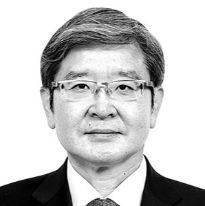How to go against the tide

Jerng Dong-wook
The author is a professor at the Energy Systems Engineering School of Chung-Ang University.
Countries from around the world are competing against one another with great effort in the field of small modular reactors (SMRs). Last year, the European Union included nuclear energy in the category of “Taxonomy,” which defines environmentally-friendly energy. On Oct. 21, the European Parliament passed the Net-Zero Industry Act, stipulating support for the nuclear energy industry, including SMRs.
In Canada, Ontario Power Generation had announced a construction plan for a BWRX-300 SMR, jointly developed by GE of the United States and Hitachi of Japan. Recently, it announced a plan to build three more units. The Tennessee Valley Authority, the largest electric utility corporation in the United States, is also making an investment to introduce BWRX-300s.
Sweden — which had declared a nuclear phase-out policy and banned construction of new nuclear plants — made a dramatic policy shift with plans to build 10 reactors by 2045. That’s not all. Finland’s state-owned energy company Fortum has begun a feasibility study for SMRs, and Korea’s innovative SMRs currently being developed were included in the study. And yet, Korea’s majority Democratic Party (DP) made a decision to cut the entire budget for the new SMR development project. The decision is far from the global trend and a major mistake that will miss opportunities for carbon neutrality and future growth engine.
The next-generation innovative SMR development project was proposed at the 10th Atomic Energy Commission meeting in 2021 as a national agenda. At the time, the Moon Jae-in administration was pushing forward its nuclear phase-out policy, but the Korea Hydro & Nuclear Power and experts from the industry and the Korea Nuclear Society discussed its necessity and technical feasibility. At the National Assembly, a forum for the next-generation SMR development was launched and received bipartisan support. It was co-chaired by the governing People Power Party (PPP) Rep. Kim Young-shik and DP Rep. Lee Won-wook.
The Yoon Suk Yeol administration has elevated the next-generation SMR project to a national agenda. It aims to acquire the design certification by 2028 in order to enter the overseas market in the 2030s and start construction in Korea. To this end, the innovative SMR project group was launched this year to develop technology, a rare case of cooperation between the two rival parties amid their heated political battles. The majority party must not sabotage this project.
The DP’s veto seems to have been prompted by the recent decision of NuScale Power of the United States to end its SMR project. NuScale’s first SMR project was targeting the electricity market of the state of Utah. An economic assessment conducted earlier this year found that rapid inflation had driven the unit cost of electricity to $89 per megawatt hour, up more than 50 percent from two years earlier, even with government subsidies. The average retail price of electricity in Utah is $88 per megawatt hour, making the SMR project unaffordable. While the initial construction project in Utah was terminated, NuScale will likely continue to pursue exports to Eastern European countries such as Romania and Ukraine, while putting more effort into building SMRs to supply electricity to data centers.
Korea is a potential export destination for NuScale. Although its project was not economically viable in America, it could be a different story if it builds SMRs in Korea. The Korea Electric Power Corporation (Kepco)’s average power purchase price in 2022 was 155 won (12 cents) per kilowatt hour. Even now, gas-fueled power is 221 won per kilowatt hour. NuScale’s supply price is 154.7 won per kilowatt hour.
If SMRs are built in Korea, the construction cost will be cheaper than in the United States thanks to low wages and strong nuclear industry infrastructure. Korean companies such as Doosan Enerbility, GS Energy and Samsung C&T also have made massive investments in NuScale. Doosan has a production background while Samsung has experience in construction and GS has experience in operating power plants, although they are thermal plants.
It is not unrealistic to imagine that NuScale would partner with those Korean companies to enter the Korean market. Since SMRs are small, they are perfect for self-generation. Even if the company would not target the power market, it can supply SMRs to companies that need to generate electricity around the clock, such as steel plants and data centers.
Despite this situation, the DP abruptly cut the entire budget for the development of innovative SMRs. There are only two years left to apply for the decision on certification in 2028. It won’t be easy to win the certification even if the country puts all possible efforts into developing the design. The budget cut under such circumstances is the same as saying, “Don’t push it.” If we want to protect the domestic SMR market from foreign suppliers, let alone entering overseas markets, the budget must be restored.










with the Korea JoongAng Daily
To write comments, please log in to one of the accounts.
Standards Board Policy (0/250자)